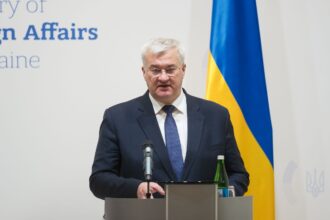Georgian Manganese is a giant industry that operates a ferroalloy plant in Zestaphoni, and manganese mines in Chiatura, Imereti region. The company said the “temporary” arrangement would last until March 1, 2025. Citing a fall in ferroalloys prices on the global market and constant protests at the Chiatura Mines, it told workers just a few days following the parliamentary vote, it would keep workers on 60% of their pay plus insurance. Georgian Manganese is an industry giant which operates a ferroalloy factory in Zestaphoni, and manganese mining in Chiatura, Imereti Region. The “temporary arrangement” will last until March 1, 2020. Georgian Manganese cited ore scarcity, blaming protesters for closing “7 out 12” mines in the mining town Chiatura, which, according to the company, led to a 70% decrease in ore extraction. Residents of Shukruti village in Chiatura had been picketing the Korokhnali mines and Shukruti Mines for months to demand fair compensation. Manganese mining had severely damaged or destroyed their homes and orchards. The Shukruti protests were not mentioned by the company management in their earlier statements about cutting silicomanganese by 60%. “As of today the demand for ferroalloys is again at a minimal level,” Giorgi Tashvili, financial Director of Georgian Manganese told Rustavi TV on October 2 a month before they announced the production stop. “Despite the passage of the two-year time period and our optimistic expectations, the crises continues.” And the company had already faced a similar crisis before Shukruti protesters set up near the mines. Chiatura experienced a major strike in the last year, after Georgian Manganese implemented a similar special regime lasting for months. The company cited a global market crises as a reason. The crisis at the time was mainly affecting mining. The company claimed the production costs were higher than the market value for ferroalloys. The crisis was further aggravated when Russia restricted access to its market through import duties. Ferroalloys is one of Georgia‘s most important export products. In 2022, ferroalloys accounted for more than 8% of Georgia’s total exports. Only copper ores and concentrats (18.3%), and motor cars (16.2%) were higher. By 2023, however the ferroalloy trade had fallen by 60% and was only 3% of Georgia’s total exports. The company cited the inability to sell the ferroalloys on the American market. Data source: Geostat “Last month no ferroalloys have been sold in the United States, which is our main export market,” Georgian Manganese stated in a statement on October 31. Georgian Manganese’s October 31 statement said that while official statistics show Georgia exported more manganese than it did in 2023 in the first nine-month period, the main destination for exports in 2024 was Turkey which imported almost twice as many as the United States. According to widely disputed results, the ruling Georgian Dream won in both municipalities. The region has been heavily dependent on industry for many years, with manganese being mined since the 19th century in Chiatura and a ferro alloy plant in Zestaphoni processing the ore since 1933. The news has caused concern among workers, especially those with bank loans. “People are facing a difficult decision – pay off their bank debts or feed your family,” Magharoeli wrote in a post on Facebook following the announcement. The group called for those “for whom the situation is unbearable,” to come together and ask, among other things to suspend their obligation to repay bank loans without any additional interest. Georgian Manganese, since 2017, has been managed by a special manager appointed by the state. The ownership of the company is not completely clear, but a group of Georgians close to the ruling party and the jailed Ukrainian businessman Ihor Kolomoyskyy have been identified as its ultimate shareholders.
Copy URL
Read More @ civil.ge




